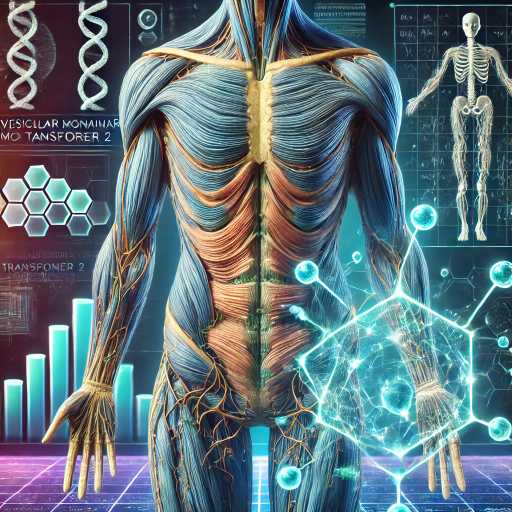Unlock the Secrets: Empower Your Health by Reducing Sugar Intake!
In our fast-paced world, sugary snacks and drinks have become a regular part of our diets. But it’s important to understand the potential harm they can do to our bodies. Sugar, like smoking, poses serious risks to our overall health. As a doctor and scientist, I want to shed light on this issue and stress the importance of taking action to protect ourselves.
Diabetes has become a prevalent disease in today’s society. In fact, it is so common that it is hard to imagine it not being around, Diabetes is a fairly modern, lifestyle disease. So what has changed in modern times to cause such an increase in diabetes? Newton’s third law of motion states “to every action, there is an equal and opposite reaction.” So why isn’t the pancreas working the way it should?
The pancreas has two main roles: it releases two hormones, one is glucagon, which gets the blood sugar down, and the other hormone is glucose, which gets the blood sugar level up. The food we eat plays a huge role in managing our blood sugar, and a healthy diet is crucial in keeping the pancreas functioning normally. Our diet should consist of nutrient-dense foods such as fiber, vegetables, proteins, legumes, and healthy fats. This healthy diet regimen allows for a slow, steady release of nutrients, which helps the pancreas to release the insulin as it’s needed.
However, what’s happening today is that people are predominantly consuming a high carbohydrate diet. The high carbohydrate diet releases a lot of glucose, which can cause blood sugar levels to rise and affect the pancreas. The main culprit is one grain found in bread, cereal, pasta, cakes, and pizza: wheat. In the 1950s, wheat went through intensive cross-breeding to create a plant with a high yield of grain.
By the 1990s, every bread, cereal, pasta, cake, and pizza were made out of this hybridized wheat. The wheat was rushed through with no safety studies, and it created a starch structure that gets the blood sugar level up higher than even sugar. The starch structure is called amylopectin A, and it causes a sharp rise in blood sugar levels, which can lead to a corresponding dump. This affects the diabetic population significantly.
The glycemic index is a crucial tool for diabetics to manage their blood glucose levels. Foods such as berries, grapefruit, and certain beans have a low glycemic index, which means that they release glucose slowly, providing steady energy throughout the day. Foods such as sugar, white bread, white pasta, and white cereal have a high glycemic index and lead to a quick surge in blood sugar levels. Surprisingly, even whole wheat bread has a high glycemic index due to the amylopectin A in it.
Wheat has not been helpful to our society, and it’s time for us to eliminate it from our diet entirely. Even though change may not be easy , it’s essential for us to make an effort to live a healthy lifestyle and manage our blood glucose levels naturally.There is a reason why our pancreas isn’t functioning the way it’s supposed to. It’s up to us to take charge of our health by making mindful choices about what we eat.
Our bodies depend on glucose, which comes from the food we eat, as our main source of energy. It’s crucial to keep our glucose levels in a healthy range, which is called homeostasis. Having either high or low blood sugar levels can have severe consequences for our well-being. When blood sugar levels are high, our body tries to counteract this by removing and storing the extra glucose as glycogen. When levels get too low, glycogen reserves are released to restore balance. Sadly, high blood sugar levels have become common in our society and can lead to various health problems.
On average, a person has about 5 grams of blood sugar circulating. Alarmingly, once it reaches 7 grams, they are considered diabetic, with just 2 extra grams putting them at risk of disease!
Now, let’s take a closer look at what happens inside our bodies when we have too much sugar. Nutrients and oxygen are transported through our system by the bloodstream. Oxygen relies on red blood cells and a protein called hemoglobin to be delivered effectively. But when glucose enters the bloodstream from the small intestine and liver, it attaches itself to the oxygen-carrying hemoglobin protein. This attachment, known as glycated hemoglobin or A1c, causes the proteins to caramelize, just like caramel popcorn!
This caramelization, or ‘caramelized’ A1c, leads to the release of harmful substances called reactive oxygen species and free radicals, causing damage to our tissues. Our body works hard to prevent this damage from occurring.
Having high levels of A1c, which can result from consuming foods like bread, soda, potatoes, grains, fruit juice, biscuits, and other starchy or sugary foods, triggers a series of defense mechanisms in our bodies. The pancreas ramps up its production of insulin, which signals cells to absorb extra sugar. This process happens in three main places:
1. Liver cells, which can store around 100 grams of glycogen.
2. Muscle cells, which can store about 400 grams of glycogen. Building up muscle is important because it helps remove glucose from the bloodstream.
3. Fat cells, which can store an unlimited amount of glycogen. Unfortunately, our bodies have a preference for storing excess glucose as fat rather than letting it cause more serious problems.
But continuous high blood sugar levels also bring two additional dangers:
1. The pancreas gets worn out and becomes resistant to insulin.
2. Insulin resistance leads to more tissue damage and can eventually result in diabetes, a chronic disease with significant implications for our health.
Did you know that obesity is the second leading cause of cancer, right after smoking? Cancer cells thrive on glucose and require about 40 times more of it than normal cells.
In addition, research has shown that Alzheimer’s disease often involves caramelized proteins, which contribute to the formation of a substance called amyloid plaque. This plaque comes from misfolded proteins and has led to Alzheimer’s being called Type 3 Diabetes.
So how did we get to this dangerous point? It’s because we keep eating too many starchy and sugary foods, leading to an excess of glucose in our bloodstream. That’s why doctors order A1c tests when patients have various symptoms – it’s a way to measure overall blood sugar levels. At 6.4%, you might not be diagnosed with diabetes, but at 6.5%, you are.
As both a healthcare professional and someone who cares about your well-being, Don’t wait for a disaster to strike before changing your lifestyle. Start making the necessary adjustments to protect your health:
1. Make getting quality sleep a priority.
2. Add regular exercise to your routine.
3. Choose a balanced, nutritious diet and avoid excessive sugars and starchy foods.
Every one should personally monitor my own blood sugar levels 24/7 using a device that continuously measures glucose. It’s better to be safe than sorry!
Make no mistake: sugar is a hidden threat. Take charge of your health and safeguard your future. Let’s say no to sugary treats!
#Awareness #HealthFirst #LifestyleMatters #PreventiveCare #science #future #techn
ology #future #medtech #foodtech #edutech #advocacy













